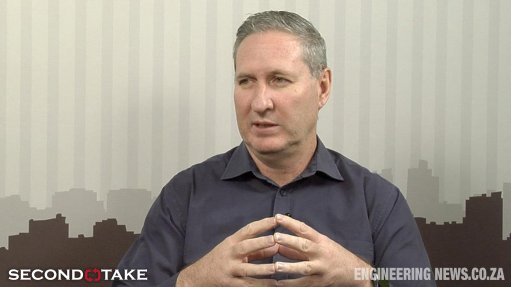Glimpse into NECOM’s proposed ‘roadmap to end loadshedding’
The National Energy Crisis Committee (NECOM), which is overseeing the implementation of the National Energy Plan announced by President Cyril Ramaphosa in July, presented a ‘Roadmap to end Loadshedding’ to various partners and stakeholders this week.
The presentation has not been formally released and the committee is yet to make a public briefing. It is, thus, possible that the roadmap presented will be adjusted, particularly given intensive recent discussions on the crisis and reports that Ramaphosa had “locked NECOM in a room” this week with an instruction to find solutions.
The roadmap presented covers this year and next, as well as the period after 2024 and outlines what energy and capacity could be injected over the period as a result of the various interventions that have been announced as part of the Energy Action Plan.
Besides assuming that 6 000 MW could be introduced over the coming two years as a result of an improved performance from Eskom’s coal fleet, especially from Tutuka, Kendal, Duvha, Majuba, Medupi and Kusile, the roadmap indicates that 8 822 MW could be added this year from other sources.
Notably the roadmap makes no reference, however, to securing additional diesel for the open-cycle gas turbines, despite a renewed call from business for government to fund Eskom’s diesel use to reduce loadshedding stages in the short term.
Eskom has already more than exhausted its diesel budget for the current financial year and the National Energy Regulator of South Africa (Nersa) has granted Eskom revenue of R8.4-billion for the coming financial year, beginning on April 1, against an Eskom request for R16.9-billion.
The specific interventions outlined for 2023 outside of the generation recovery plan under way at Eskom include sourcing:
- 2 880 MW from the recovery of Kusile Units 1, 2 and 3, as well as the completion of Unit 5. Currently, three Kusile units are offline following the October 23 structural collapse of the chimney duct, which is forecast to take months to repair;
- up to 1 625 MW arising from imports from neighbouring countries;
- 1 597 MW from private embedded generation projects;
- 1 350 MW from the standard offer and emergency generation programme;
- some 850 MW from rooftop solar;
- about 250 MW arising from demand-response and energy-efficiency programmes;
- some 200 MW from the first phase of Eskom battery roll-out; and
- 70 MW arising from existing independent power producers (IPPs) with surplus energy.
During 2024, the roadmap estimates that a further 8 665 MW could be injected from municipal procurement (1 500 MW); emergency power projects (775 MW); bid window five renewables projects (794 MW), additional demand response (1 200 MW), the procurement of IPP battery storage (513 MW); the return to service of Medupi Unit 4 and the completion of Kusile Unit 6 (1 520 MW); additional embedded generation (2 125 MW) and Eskom just transition and battery projects (238 MW).
Beyond 2024, the roadmap indicates that more than 29 000 MW could be added from various public and private procurement initiatives.
The presentation also insists that the Energy Action Plan, which has been operationalised to include nine workstreams, provides a clear way out of this crisis.
It acknowledges, however, that the electricity system will remain under pressure in the short term, which, given the current public mood, is likely to add further pressure on Eskom and government as the backlash against loadshedding intensifies.
The presentation also highlights measures that should be taken to accelerate the implementation of the Energy Action Plan, including six specific actions to add new capacity in the short-term, namely:
- improving Eskom plant performance through the ‘Generation Recovery Plan’;
- the procurement of emergency power, for which no details are provided but which is likely to be seen as code for powerships;
- the import of additional power from neighbouring countries;
- the finalisation of a feed-in tariff and net-metering guidelines “to turbocharge rooftop solar”;
- enhancing the demand-response programme and implementing a national campaign on energy efficiency; and
- streamlining regulatory processes and establishing the one-stop shop.
The presentation also outlines various enablers for prioritisation during the current year, including transmission strengthening to alleviate grid constraints and implementing an effective wheeling framework and grid connection rules to enable private investment.
Also highlighted is the need to process an ‘Energy Security Bill’, as well as the Electricity Regulation Act through Parliament to “accelerate market reforms”, while simultaneously finding a resolution to the Eskom’s debt burden, stabilising the utility’s management, and enabling more agile procurement of maintenance and spares.
NECOM, which is chaired by the President, and includes various national departments along with Eskom, Nersa and the South Africa Local Government Association, is also aiming to improve security and law enforcement around Eskom power stations, which have become targets of crime and sabotage.
Ramping up efforts to address security issues, including theft of coal and sabotage, is highlighted as a key enabler for solving the crisis and the NECOM secretariat includes officials from the National Joint Operational Intelligence Structure.
The balance of the officials in the secretariat are drawn from the Department of Mineral Resources and Energy, as well as Operational Vulindlela, which is a joint initiative of the National Treasury and the Presidency.
Comments
Announcements
What's On
Subscribe to improve your user experience...
Option 1 (equivalent of R125 a month):
Receive a weekly copy of Creamer Media's Engineering News & Mining Weekly magazine
(print copy for those in South Africa and e-magazine for those outside of South Africa)
Receive daily email newsletters
Access to full search results
Access archive of magazine back copies
Access to Projects in Progress
Access to ONE Research Report of your choice in PDF format
Option 2 (equivalent of R375 a month):
All benefits from Option 1
PLUS
Access to Creamer Media's Research Channel Africa for ALL Research Reports, in PDF format, on various industrial and mining sectors
including Electricity; Water; Energy Transition; Hydrogen; Roads, Rail and Ports; Coal; Gold; Platinum; Battery Metals; etc.
Already a subscriber?
Forgotten your password?
Receive weekly copy of Creamer Media's Engineering News & Mining Weekly magazine (print copy for those in South Africa and e-magazine for those outside of South Africa)
➕
Recieve daily email newsletters
➕
Access to full search results
➕
Access archive of magazine back copies
➕
Access to Projects in Progress
➕
Access to ONE Research Report of your choice in PDF format
RESEARCH CHANNEL AFRICA
R4500 (equivalent of R375 a month)
SUBSCRIBEAll benefits from Option 1
➕
Access to Creamer Media's Research Channel Africa for ALL Research Reports on various industrial and mining sectors, in PDF format, including on:
Electricity
➕
Water
➕
Energy Transition
➕
Hydrogen
➕
Roads, Rail and Ports
➕
Coal
➕
Gold
➕
Platinum
➕
Battery Metals
➕
etc.
Receive all benefits from Option 1 or Option 2 delivered to numerous people at your company
➕
Multiple User names and Passwords for simultaneous log-ins
➕
Intranet integration access to all in your organisation





















